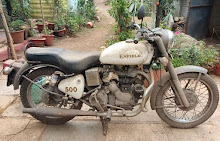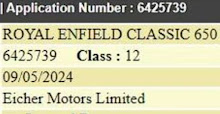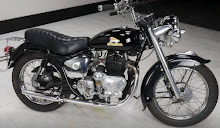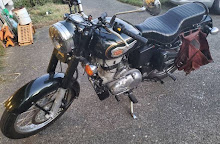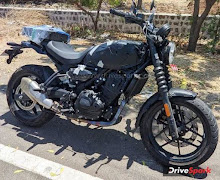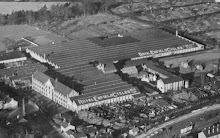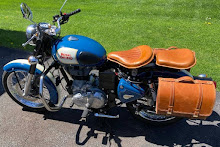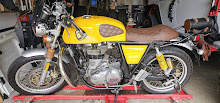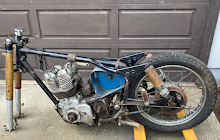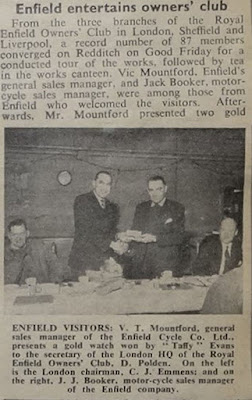 |
| A big cannon is solid, all-steel, mechanically complex, and makes a thump. |
Today's subject is not motorcycles, but artillery, as displayed on war memorials.
These have always fascinated me, and not just because I ride a Royal Enfield motorcycle.
"Made Like A Gun" is the time honored motto of Royal Enfield motorcycles, but the motorcycle-gun connection is tenuous.
The motto stems from the brand's earliest days. Implying some relationship to the famed Royal Small Arms Factory at Enfield, England, was considered just plain good marketing by a firm that made bicycles in the nearby town of Redditch.
The company was proud that it had made some parts for the armory (although, apparently, never complete guns). The parts contract was considered adequate justification for calling its bicycles (and, later, motorcycles) "Royal Enfields."
Although the "Made Like A Gun" motto was occasionally illustrated with a drawing of a rifle, the "gun" was usually shown as what most people would call a cannon. (The British military preferred to call even such big weapons "guns" since, after all, "cannon is a French word.")
Ever since, owners of Royal Enfield motorcycles have loved posing their motorcycles in front of war memorials, especially memorials featuring cannon, although warplanes on pedestals attract Royal Enfields as well.
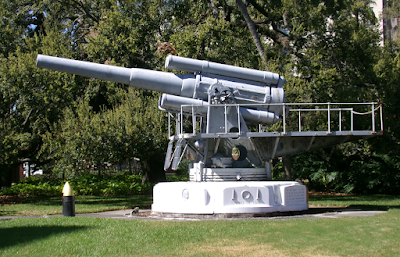 |
| The present Tampa gun was modified to fire from a railroad car. Four big hydraulic canisters cushion the recoil. |
The base of the monument describes the gun, but I wanted to know more, and boy, did I find it: an entire webpage devoted to this monument.
To my surprise, the description of the gun on the monument itself is wrong. In exacting detail, the website Tampapix explains that the monument base originally hosted a different big gun. That one was cut up and scrapped for its metal during World War II.
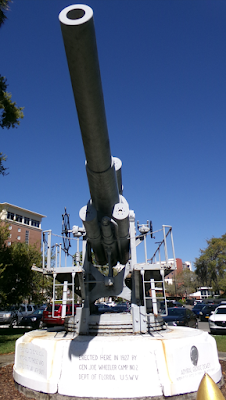 |
| Base says gun was placed in 1927, but this gun is a 1946 replacement. |
The base of the monument sat forlorn three years until 1946 when, with little fanfare, Tampa war veterans found another 8-inch cannon of the same era and the city and county paid to have it mounted. The lack of fanfare is odd, as the thing was said to weigh 15 tons, and it sits atop the memorial base on a different mounting. It is quite a big deal.
The original cannon would have been one of my favorite oddities: a "disappearing gun." This almost whimsical seacoast-defense gun would recoil back to hide below the open-topped walls of its emplacement, effectively disappearing from the view of enemy battleships after firing.
Fine, for 1898. Not so fine after the invention of the airplane, from which it was not invisible.
The replacement gun is certainly worthy of display. Whether disappearing or not, it, too, would have defended the coast, but it was rendered obsolete as battleships began to be equipped with bigger, longer ranged cannon.
It got a second life, modified as a railroad gun. Mounted on a special carriage it could approach enemy lines on the tracks. This particular gun may even have seen combat in World War I, Tampapix states (although, unusually for it, without documentation).
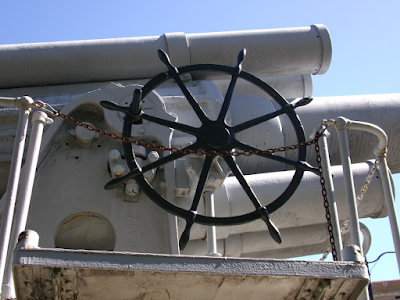 |
| Big old gun was complex, but still aimed by hand. |
Royal Enfield's motto, Built Like A Gun, very properly suggests the robust construction, precision (and complication!) of these enormous creations. Mounted as memorials to wars of 100 years ago or more, they might also be described as built to last.
